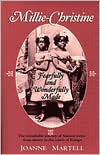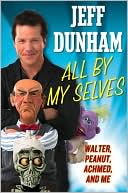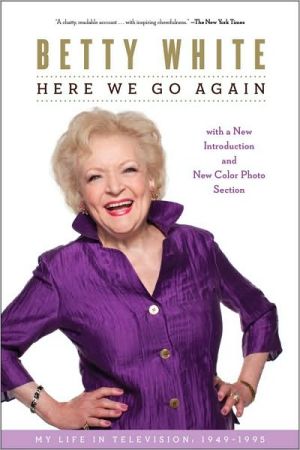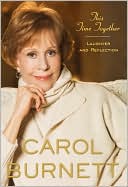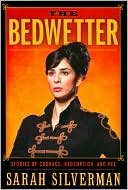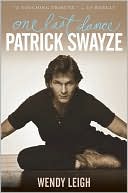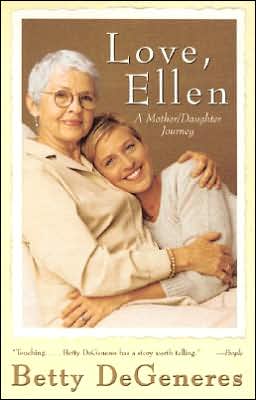Millie-Christine: Fearfully and Wonderfully Made
The remarkable journey of Siamese twins from slavery to the courts of Europe \ Born into slavery, joined at the lower spine, stolen from her parents in infancy, exhibited as a curiosity in North America and Europe, stripped naked and examined in every new town, freed from bondage on numerous occasions yet returned to her former circumstances nonetheless, Millie-Christine McKoy lived one of the most complex and difficult childhoods imaginable.\ Even more remarkable is the way she turned out....
Search in google:
The remarkable journey of Siamese twins from slavery to the courts of Europe Born into slavery, joined at the lower spine, stolen from her parents in infancy, exhibited as a curiosity in North America and Europe, stripped naked and examined in every new town, freed from bondage on numerous occasions yet returned to her former circumstances nonetheless, Millie-Christine McKoy lived one of the most complex and difficult childhoods imaginable. Even more remarkable is the way she turned out. Reunited with her family and brought under caring management, Millie-Christine became one of the most renowned performers of her day. While most African Americans were kept ignorant in slavery and destitute after the Civil War, she grew fluent in five languages and was an accomplished pianist, singer, and, yes, dancer who toured the world and entertained kings and queens. Loved by most yet ridiculed as a monster by some, Millie-Christine was one of the most amazing people you've never heard of. Her story, told here in full for the first time, has the flavor of the side-show world in which she traveled-a world of giants, midgets, human skeletons, and bearded ladies, freaks with very human souls. Publishers Weekly Recounted simply as a historical narrative, the story of Millie-Christine McKoy's life is arresting. Born in slavery in North Carolina in 1851, the Siamese twins jointly known as Millie-Christine became world famous, first as a side-show attraction in the U.S. and then throughout Europe, where they conversed in five languages, sang, recited their own poems and appeared before royalty, including two command performances for Queen Victoria. Returning to the U.S. in 1882, they traveled for several years with a prestigious circus (receiving $25,000 a season) before settling down in 1884 in a large house they built in North Carolina on land they had bought for their father after he was freed from slavery 20 years earlier. Until their death in 1912, they did charity work and toured intermittently. Drawing on promotional material from Millie-Christine's shows, various legal records, newspaper reports and a memoir written by the twins, Martell presents a succinct and moving biography of a little-known subject in American history and popular culture that offers an intriguing, if very rudimentary, portrait of late 19th-century side-show and circus life in the U.S. and Europe. Although it's not Martell's intention to probe the ancillary cultural questions that her story raises--what was the twins' legal standing before and after slavery? How did race affect their career? What impact did American popular culture have in Europe?--some readers may find themselves wanting more from this fascinating biography. (Feb.) Copyright 2000 Cahners Business Information.
\ \ \ \ Chapter One\ \ \ Two heads, four arms, four feet,\ All in one perfect body meet.\ \ Millie-Christine's poem\ \ \ Monemia McKoy's amazing babies were born in 1851, the year Topsy came alive under Harriet Beecher Stowe's pen. Had Millie and Christine begun life as ordinary slave children, they would have "growed" like Topsy, rough and tumble, ignorant as puppies. Instead, they were extraordinary twins destined for an extraordinary life.\ Aunt Hannah, a slave midwife, delivered Christine, then saw Millie's legs and coaxed her out, tiny feet first. "The large twin was born first by a stomach presentation, and the second came by the breech," a doctor later reported.\ The midwife roused both babies to noisy life but could not pull the slippery, joined bodies apart. One big girl and on her back a smaller twin. The upper bodies faced away from each other, merged at the coccyx into a single pelvis. Two sets of arms and legs. They weighed in at seventeen pounds. Aunt Hannah estimated the larger baby accounted for about twelve pounds and the little one about five. Millie was so frail, her mother said, that if it hadn't been for the legs and arms, she'd have thought it was only a knot on Chrissie's back, instead of a second child.\ Jabez McKay, a North Carolina blacksmith, owned the whole family—father Jacob, mother Monemia, and all the offspring they begat. McKay had summoned Aunt Hannah on a July morning to help Monemia deliver her latest baby. The mother was thirty-two years old and stout, with a large frame and pelvis.She'd already borne seven normal children, five boys and two girls. Her labor with Millie-Christine was as brief and easy as any of the others, she said.\ Though the summer countryside simmered with mosquitoes and killer fever, the joined sisters not only lived, they flourished. They survived against all odds, as had the Siamese Twins forty years earlier. That famous pair now lived in northwestern North Carolina, up near Mount Airy. Chang and Eng had left the show-business circuit a dozen years ago, rich enough to retire by the time they were twenty-eight years old. Choosing Bunker as a family name, they married sisters and kept them busy raising children. They bought good Surry County land and all the slaves they needed to work two profitable plantations.\ Jabez McKay's farm, where Millie-Christine was born, lay in southeastern North Carolina, in Columbus County, ten miles from Whiteville, the county seat. Marshland spread on all sides—Soule's Swamp to the south, Brown Marsh to the north and west, White Marsh to the east. During the Revolutionary War, General Francis Marion had earned his nickname—the "Swamp Fox"—sloshing through White Marsh, where he and his band of patriots took refuge after Charleston fell to the British.\ Word about McKay's newborn marvel spread through the county like wildfire. "`Have you seen the girl?' was the first question asked of every one by every one, and pilgrimages to visit her became all the rage in the country side," says a circus biography of Millie-Christine.\ Fascinated visitors discovered that if they pinched the arm of one, only she fussed. But if they tickled the toes of either, both babies giggled. Strangers saw them as twins, but to Monemia, Millie-Christine was her baby, her child. Singular. The family called her "Sister."\ Little Millie gradually caught up with her robust sister, although she would always remain slightly smaller. "Remarkably healthy and spritely" Dr. P. C. Gooch reported in an 1852 medical journal. When he saw them, "the older one was in a tranquil sleep, but it was awakened by the action of the bowels of the younger and smaller sister, who was then suffering from diarrhoea."\ The circus booklet credits Millie-Christine's good health to tender care by the McKays. "The master himself and his amiable lady," it says, "without stopping to question the designs of Providence, immediately surrounded the extraordinary infant with such care and attention as enabled it to thrive and grow. The dual-headed child was taken from the cabin to the mansion, and Mr. McCoy's family commenced then a course of care and attention to her health and welfare."\ More likely, Monemia tended her own remarkable baby. The 1840 census had recorded Jabez McKay and wife—no names for anyone but heads of households were listed on that census—as being between the ages of twenty and thirty. It also tallied one free white girl, plus eleven adult slaves and five slave children. According to Columbus County census records, by the time Millie-Christine was born in 1851, Jabez had lost his amiable lady. Age thirty-eight, occupation blacksmith, he raised four young children in the McKay "mansion." They were Ann, eight; Lucy, seven; John Lloyd, five; and James, three.\ Before Millie-Christine was a year old, according to the circus biography, McKay, "being a man in very moderate circumstances, a plain farmer, thinking the girl would become a burden to him and annoyed with the frequent visits of strangers to see her, determined to dispose of her." He was looking for a buyer who understood the tricks of the exhibition business.\ The ideal promoter would have been Phineas T. Barnum, the king of showmen. He'd have been delighted with curious strangers flocking to see Millie-Christine—the more the better. As P. T. once said, "Every crowd has a silver lining!" A month before Millie-Christine's birth, Barnum had concluded a wildly successful American tour with Jenny Lind, the "Swedish Nightingale." Wealthy beyond most men's dreams, he was currently back running his fabulous American Museum in New York City.\ Although Millie-Christine's path would eventually cross Barnum's, McKay found her first manager closer to home, a man who understood southern ways. When she was ten months old, he made a deal with a South Carolinian by the name of John C. Pervis. On a Tuesday in May, McKay, Pervis, lawyer John Maultsby, and second witness Thomas Memory from the Memory Company store on Courthouse Square gathered at the county clerk's office in the new courthouse in Whiteville. A bill of sale was what they wanted, with a couple of special provisions. The clerk dipped his pen and set to work recording the bargain.\ "Know all men by these presents," the document began, and went on to record that on May 18, 1852, Jabez McKay of the county of Columbus in the state of North Carolina and John C. Pervis of the Chesterfield district in the state of South Carolina entered into an agreement whereby McKay "doth ... bargain sell and deliver" for the sum of one thousand dollars, "certain twin negro girls about ten months old, and united from their birth."\ Pervis was to exhibit the twin girls for pay and give one-fourth of the net proceeds to McKay. He was also to pay McKay one-fourth of the proceeds should he find someone else eager to buy the sisters. McKay agreed to let Monemia accompany the twins without charge for as long as Pervis kept them. In case they were sold to anyone else or died, the mother was to be returned to McKay.\ The bill of sale was thus duly signed, sealed, and delivered.\ Traces of Millie-Christine's and Monemia's life with Pervis have disappeared, lost to time. The final mention of Pervis's name turned up in another contract with McKay, dated September 30, 1853, fourteen months after the original sale. This time, Pervis paid a final two hundred dollars to McKay, apparently to broker a deal between McKay and a new buyer. He then bowed out of Millie-Christine's story. Maybe Pervis tired of show business. Or perhaps he'd been out scouting for a high-stakes buyer all along and left satisfied with his cut of the final sale price.\ The successful new bidder was a Mr. Brower. As for the exact amount, take your choice. The 1882 circus Description of the twins' life reported ten thousand dollars. Their 1869 History said that Brower "gave for us, two strange lumps of humanity, the sum of thirty thousand dollars." A 1912 New York Times story upped the figure to forty thousand.\ Whatever the price, there was one major hitch. "This Brower was not possessed of the requisite cash to back his faith, and only offered to give a note of hand for the purchase money," said the Description. Blacksmith McKay, showing good business sense, "naturally desired some responsible person to whom to look for the money in case of the non-payment of the note when due."\ Brower found such a backer in Joseph Pearson Smith, a respectable and well-to-do merchant from Wadesboro, North Carolina. With Smith as cosigner of the promissory note, Jabez McKay handed over his odd little twins.\ Manager Brower began brilliantly with the sisters. A week after the sale, he announced in the Raleigh Register that the public would have a chance to see the two-year-old twins at North Carolina's first official state fair.\ "GREAT ATTRACTION!" ran the headline. "THE CELEBRATED CAROLINA TWINS will be exhibited at Raleigh during the Agricultural Fair. These children have been pronounced by Physicians the most interesting specimen of Humanity ever seen, ... healthy, active, and for their age, unusually intelligent. They are joined together at the back by the union of the two spines in one, making the connection much more intimate than that of the Siamese Twins. Many Physicians have examined them, and all agree in their being the greatest curiosity ever seen or heard of—some of their organs being in common, while others are perfectly distinct."\ The piece went on to say that, often, one child was playful and active while the other was fast asleep. "Visitors have expressed surprise to find them so PERT and CUNNING, with such intelligent, happy faces, where they had not expected to see such interesting children. Call at once if you would not miss the opportunity of seeing the greatest wonder of the Age, as you may ne'er look upon their like again. Doors open from 9 o'clock A.M. till 12 P.M. for Ladies only; and from 2 P.M. till 4, for gentlemen alone."\ Directly beneath the item about the Carolina Twins was an ad for a runaway slave from Orange County: "$100 REWARD. Ran away from the subscriber, ... a negro Boy named William Henry.... The above reward will be given if caught out of the State, or Fifty Dollars if taken in this State, and delivered to me ... or in any jail so that I can get him." This routine ad in an 1850s southern newspaper had nothing to do with the twins—except for the final, prophetic sentence: "The subscriber has a suspicion that the boy has been taken off by some unprincipled white man, who may undertake to pass him off as his property." If the tiny sisters had somehow wandered into a fortuneteller's tent at the fair, a Gypsy might have foretold exactly such a future for them.\ But in those golden days of October 1853, the twins were safe at the fair. "It was a grand spectacle, to see those extensive grounds gay with banners and lively with music," the paper said. "Our streets are thronged with immense and eager crowds, and all the avenues leading to the Fair Grounds blockaded with vehicles of every description. Nothing like the number of persons present has been seen here since the great Whig Convention of 1840."\ The fair turned out to be the roaring success that boosters had hoped for. One hundred fifty-seven exhibits sat on display in the new buildings. There were farm implements—smut machine, corn sheller, one-, two-, and four-horse ploughs. There was prizewinning livestock. There were curiosities like "a saw fish sword and a pearl shell from the Dead Sea carved by Jews in Jerusalem," according to the Register. There were homemade cakes and candy and blackberry wine. There were flowers, prize tomatoes, a box of "Segars," and a magnificent display of North Carolina buggies and carriages "which might fear no rivalry with the best work of the North, either in beauty of design or excellence of workmanship."\ Outside the exhibit halls, Siva's Troupe of Chinese Jugglers and Acrobats, forty-two in number, performed amazing tricks at a special side show.\ The daily entrance fee was twenty-five cents for a person, fifty cents for a buggy, and a dollar for a carriage. Spend another fifty cents and you could watch the celebrated Carolina Twins at play—"pert and cunning," as the ads promised. Millie and Chrissie were already used to being stared at. They chatted away to each other and to visitors in the manner of all two-year-olds.\ A physician who saw them about this time noted that "their intellectual operations are as distinct as though no union existed; they amuse themselves together as do other children—sometimes become angry and resort to blows, and even at their early age are very ready each to accuse the other of faults committed between them."\ Walking was a problem. Mostly, Chrissie set out for wherever she wanted to go, while Millie helplessly back-stepped along until they both fell down. As the doctor explained, "They are still too young to determine what will be for them the easiest mode of progression." He predicted that they would ultimately adopt a kind of side step.\ Four to six thousand visitors roamed the fairgrounds daily. If half of them handed over fifty cents to see the sisters—twenty-five hundred customers a day for four—days then Brower's take would have added up to roughly five thousand dollars for his first venture with the twins.\ It's possible that Monemia accompanied them to the fair. McKay may have let her go with Brower as far as Raleigh. If he did, the twins still had their mother for a few final days. But even if that was the case, Monemia had to give up her special children when the fair shut down on Friday, October 18. The closing gates marked the twins' last sight and scent and feel of their mother for what would seem forever. The saving grace was that they would never have to face the world alone. Millie had Chrissie and Chrissie had Millie, so long as they both should live.\ Brower's grand success with Millie-Christine inspired him to venture farther from home. New Orleans doctors encouraged him to bring her down so they could have a look. The worldly old city was a showman's paradise, Brower knew. Millie-Christine was strong and healthy. It was time to take to the road.\ Brower's contact promised to set up medical examinations and invite the press. Promoters with extraordinary living curiosities to exhibit followed such procedures in each new town. Before opening the doors to the general public, they invited local medical men to come satisfy their scientific curiosity. For Millie-Christine, physical examinations were a routine part of life. Physicians probed and pinched above and below, measured the sacral union, inspected the curiously merged genitalia. The doctors then signed a paper certifying that Millie-Christine was the genuine article. The next step was to send copies, press releases, and publicity for the show to local newspapers.\ Brower intended to keep Millie-Christine out of the public eye until opening day. The circus biography says that Brower's New Orleans agent advised him to keep her presence in the city as quiet as possible, "as the desire to see her would undoubtedly be very great and might interfere with the examination."\ This impossible plan meant that Brower had to smuggle his incredible toddlers into French Quarter lodgings, then wait discreetly without fanfare or fuss until the doctors gathered to examine them. His success depended upon mule-carriage drivers, landladies, maids, cooks, and newspaper reporters all keeping the secret.\ Needless to say, "this precaution was not strictly regarded, and soon the rooms and the passages ... were literally besieged with anxious crowds of people eager to get a sight of her," says the biography. At last, the New Orleans medical-school faculty filed in, conducted examinations, and unanimously endorsed Millie-Christine as "Nature's greatest wonder." By then, of course, half of New Orleans had already seen her free of charge.\ On opening day, the show "succeeded but indifferently," and prospects showed no sign of improving. The biography blames Brower, who, "being quite ignorant of the business he had undertaken, despaired of success after a few more efforts."\ Then, unexpectedly, like sunlight glinting off the river, Lady Luck seemed to flash a dazzling smile his way. Brower would not be the last of Millie-Christine's managers to mistake the lady's mischievous wink for a smile. He met a smooth-talking adventurer from Texas who boasted of his immense tracts of western land. He might be able to help Brower out, the fellow said. He offered an irresistible deal. "This swindler proposed to purchase the girl by giving for her lands, at a fair market valuation, to the amount of forty-five thousand dollars," according to the Description.\ Forty-five thousand dollars! Brower accepted the offer, packed up Millie-Christine, and handed her over to "the would-be millionaire." He was to receive the land deeds the following day.\ But when neither the Texan nor the deeds were forthcoming, the unpleasant fact broke upon Brower that he had been duped—that his Millie-Christine had vanished as utterly as his Texas millionaire. Indeed, the kidnapper had covered his tracks so adroitly that Brower found "no clue to her, or even the direction she had been carried," says the biography.\ After weeks of useless searching, he made his gloomy way back to North Carolina to break the news to Joseph Pearson Smith. Without the sisters, Brower confessed, he was bankrupt. Smith, left holding the promissory note, was now the lucky owner of the celebrated (although missing) Carolina Twins.\ The two men grimly set off for Jabez McKay's farm to relate the shocking story. With Monemia's screams ringing in his ears, Brower then dropped out of Millie-Christine's life.\ "Words are inadequate to describe the anguish of the parent on learning the fate of her child," the biography says. "For a time she was perfectly frantic, during six days refusing food, and for the same number of nights her eyes did not close in sleep. Her excellent character, uniform kindness and amiable disposition had made her a general favorite, so that everything that could be was cheerfully done to comfort and soothe her mind. She was promised that no amount of money should be spared, no effort left untried to procure her much-cherished child."\ Smith paid off the note he'd guaranteed and received from Jabez McKay "a deed which made him the exclusive owner, under then existing laws, of the person of Millie Christine"—when and if he found her.\ Thirty-eight-year-old Joseph Pearson Smith managed his father's successful general store, Smith & Sons of Wadesboro. Determined to recover his investment, he approached his dilemma with a businessman's straightforward, practical question: Where was Millie-Christine, and if found, how was she to be recovered? For the answer, he hired private investigator T. A. Vestal, of Selma, Alabama, said to be one of the shrewdest detectives in the country.\ Vestal immediately commenced operations, although the trail was cold. He ran down rumors, followed leads. Millie-Christine had not gone the way of ordinary runaway slaves. She was traveling a very different route, moving within a show-business world Vestal didn't know much about and would be a long time learning.
\ Publishers Weekly - Publisher's Weekly\ Recounted simply as a historical narrative, the story of Millie-Christine McKoy's life is arresting. Born in slavery in North Carolina in 1851, the Siamese twins jointly known as Millie-Christine became world famous, first as a side-show attraction in the U.S. and then throughout Europe, where they conversed in five languages, sang, recited their own poems and appeared before royalty, including two command performances for Queen Victoria. Returning to the U.S. in 1882, they traveled for several years with a prestigious circus (receiving $25,000 a season) before settling down in 1884 in a large house they built in North Carolina on land they had bought for their father after he was freed from slavery 20 years earlier. Until their death in 1912, they did charity work and toured intermittently. Drawing on promotional material from Millie-Christine's shows, various legal records, newspaper reports and a memoir written by the twins, Martell presents a succinct and moving biography of a little-known subject in American history and popular culture that offers an intriguing, if very rudimentary, portrait of late 19th-century side-show and circus life in the U.S. and Europe. Although it's not Martell's intention to probe the ancillary cultural questions that her story raises--what was the twins' legal standing before and after slavery? How did race affect their career? What impact did American popular culture have in Europe?--some readers may find themselves wanting more from this fascinating biography. (Feb.) Copyright 2000 Cahners Business Information.\ \ \ \ \ Library JournalIn 1851, twins with two heads and two sets of limbs but one torso were born into slavery in Columbus County, NC. By the time she had turned four, Millie-Christine, as the girls were jointly known, had been stolen from her parents, sold three times, and kidnapped once. For years, Millie-Christine traveled as a featured performer in sideshows and circuses. Traveling three continents, she became noticeably cultured--she could speak five languages and converse in two tongues at once. But North Carolinian Martell succeeds in bringing little more than a sense of bizarreness to this tale, fleshing out the slim historical record with anecdotes about other 19th-century figures (like Tom Thumb) and thinly supported conjecture. Her account is a sort of history by proximity--it drips with phrases like must have, may have, and would have been. "I am most wonderfully made," Millie-Christine used to sing, "A marvel to myself am I"--but you can't tell that from this book. Evoking neither her specialness nor the flavor of the 19th-century freak's world, this book is not recommended.--David Keymer, California State Univ., Stanislaus Copyright 2000 Cahners Business Information.\ \ \ School Library JournalYA-Jabez McKay, a North Carolina blacksmith, owned a slave who gave birth to conjoined or Siamese twins. Each of the girls had two legs and arms but experienced common sensations from the pelvis area down. They faced away from each other and were of unequal size at birth. Christine weighed in at an estimated 12 pounds while the weaker Millie was only estimated to be five pounds. Before they were a year old they had been purchased and become lucrative moneymakers for a succession of owners. In the course of "her" lifetime, Millie-Christine (referred to equally as often in the singular and in the plural) was presented before Queen Victoria three times, worked as part of P. T. Barnum's sideshow, performed throughout Europe and the U.S., and provided enough funds for "her" father to purchase farmlands to support the rest of the family. When freed by Lincoln's declaration in 1863, the girls remained with their last owners, the Smith family, under whose management and care "she" continued "her" performing career. Mrs. Smith's tutelage enabled the girls to learn to read and write, to play the piano, sing and dance, and eventually speak five languages. This story offers a fascinating glimpse into the world of "freak show" inhabitants in the 19th century. Photos and reproductions from the time, and the words of Millie and Christine bring the time period to life. These indomitable, remarkable, and courageous women will capture readers' hearts.-Carol DeAngelo, Kings Park Library, Burke, VA Copyright 2000 Cahners Business Information.\ \ \ \ \ BooknewsThe cover reads "The remarkable journey of Siamese twins from slavery to the courts of Europe." Annotation c. Book News, Inc., Portland, OR (booknews.com)\ \
